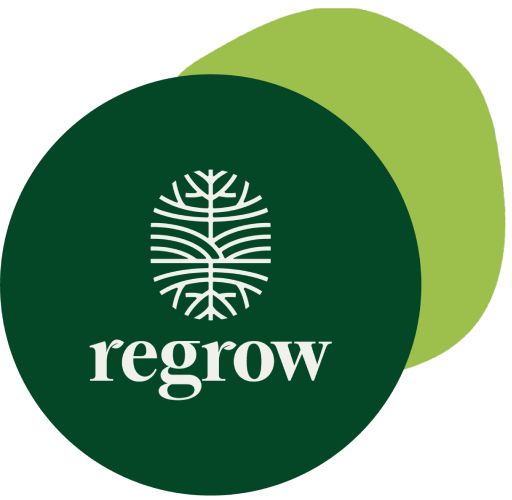For many, nature and data are in constant conflict with one another. Where nature grows, data is constricted and vice versa. However, for Mitchell Hora, seventh-generation farmer and founder of soil health and data company Continuum Ag, nature and data go hand-in-hand.
Through his company and his work on the farm, Mitchell is showing farmers that, with data, regenerative agriculture is scalable and accessible. The Regrow team discussed this concept with Mitchell at a recent field day hosted by Continuum Ag.
“That’s part of my role, I think. In order to scale things up, and in order to help more farmers, we have to be able to show them the data… [show them] how data can help them get from point A to point B.”
The Hora family has been utilizing data for years on their farm, but they’ve been employing regenerative farming techniques even longer. They began no-till farming in 1978 as a way to combat soil erosion and reduce the amount of time and diesel fuel spent making tillage passes.
For the last 50 years, the family has been scaling up their own regenerative agriculture practices, and within the last decade the Horas have integrated cover cropping into their management as well. However, Mitchell no longer considers these practices to be defenses against soil erosion or tight margins. In fact, it’s just the opposite: “I want to use cover cropping as an offensive tool instead of as a defensive tool. It's been preached as a defense against erosion, against weeds, issues in water quality, etc. And that's fine, but it's hard to put a dollar figure on that, and that drives the bottom line on any farm.”

Rather than defending his farm from crop stress or yield loss, Mitchell is using these practices to build his soil health as an offensive measure. And he’s using soil health data to help make that happen.
“What's amazing to me is how fast we can improve soil health, because all the literature says it takes 10 years to improve. But if you're looking at the right factors, you can see change nearly instantly. Over the last three or four years using cover crop, we've tripled our biological activity. We've nearly tripled our water-soluble organic carbon. We've been able to decrease our synthetic fertilizer by about 45%. We've decreased our pesticides by about 75%. And we've been able to improve our organic matter by 1.4% in the last 10 years.
‘And from all that, we're equating about $80 per acre going to the bottom line, on average. And we’re not doing anything too crazy. That's fairly conservative, but additional profitability in just a couple of years, is about $80.”
Mitchell is an agronomist by trade, so having a deep understanding of soil health is in his nature. However, he also understands that data can facilitate that understanding for farmers, which is where his company comes in. Mitchell started Continuum Ag during his junior year of college. Though it began as a soil health consulting company, they quickly became overwhelmed with data, and Mitchell found it was necessary to build a platform to make digesting data easier.
Through his experience and his company Mitchell has been able to marry nature and data, allowing the two to work together in service of more sustainable agriculture practices.
“With all this data, we can help farmers to implement regenerative agriculture and help them drive profitability. And then, if we can use that data to drive transparency, sustainability initiatives and participation in things like carbon markets, well that's the cherry on top.”
Learn more about Mitchell Hora's company, Continuum Ag, here.
.png)


